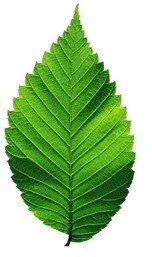The Elm
/Whilst walking in Wimpole park with an expert on its garden history I learned that the pipes which carried water to the (now disappeared) fountain were made from elm wood. I realise that this will not be especially surprising to other garden historians but I was amazed and set out to find out more about the uses of this tree which was once as much a part of our landscape as the oak. Elm wood resists rotting when in contact with water, it was therefore the best timber for ships’ keels, mill wheels, lock gates, paddles, underwater piles and pipes. When London’s old Waterloo Bridge was demolished in 1936 the 125 year old elm piles which had held it up were in perfect condition. This “Waterloo elm” was cut into pieces and sold as souvenirs, I wonder where these pieces of the old bridge are now? The New River scheme which carries fresh water from springs in Ware into London used elm pipes which were dug up in 1930, still intact, having been laid in 1613! The production of water pipes from large elm boughs was a significant industry in the seventeenth and eighteenth centuries, boring a long pipe could take two men a week using a long auger.
Back to the tree which is now most famous for its demise and its disease. In his excellent book, “Epitaph for the Elm”(1978) Gerald Wilkinson’s introduction begins: “The elms are dying. Gaps appear in familiar lines of trees that we never bothered to think of as elms. Half the tall trees, and many smaller ones, in the roadside hedges seem to have been elms, we notice, now they are so unhappily conspicuous……We took them for granted as an inseparable part of our characteristic lowland landscape…”
There are three principal elms in Britain: the English Elm (Ulmus minor var vulgaris), the Smooth-leaved Elm (Ulmus minor subsp. minor) and Wych Elm (Ulmus glabra). Many of our elms are hybrids, not easily pinned down to specifics however all elm leaves are distinctively asymmetrical, each half meeting the leaf stem at a different place and the teeth around the leaf have teeth themselves, they are double toothed.
The Preston Park Twins, Brighton
Although the elm has disappeared as a large landscape tree from much of lowland Britain (approximately 25 million trees died), over 17,000 elm trees remain in the National Elm Collection in Brighton and Hove. These trees were planted by the Victorians and the Edwardians due to their tolerance for thin chalk soils and salty winds. When Dutch Elm Disease was rampaging through Britain, Rob Greenland, Brighton and Hove Council arboriculturalist, decided to save the elms by selective pruning and felling and by trapping the bark beetles on the town outskirts, clearly it worked !
The Preston Park Twins, Britain’s largest elms, part of the National Elm Collection. In July 2019 one of these showed signs of being infected and had to be felled to protect its 400 year old twin.
Sadly many historic elm garden landscapes including Brown’s design at Croome Park survive only as photographs.
I was spoilt for choice when looking for the elm in art and poetry, it is everywhere in John Betjeman’s and John Constable’s England. John Clare’s poem, The Fallen Elm begins:
“Old elm, that murmured in our chimney top, The sweetest anthem autumn ever made”….. is a heartfelt ode to this wonderful tree.
https://www.poemhunter.com/poem/the-fallen-elm/
Photographs: Elm leaf, Mark Tomalty Images, Pinterest; The Preston Park Twins, Brighton and Hove City Council.



